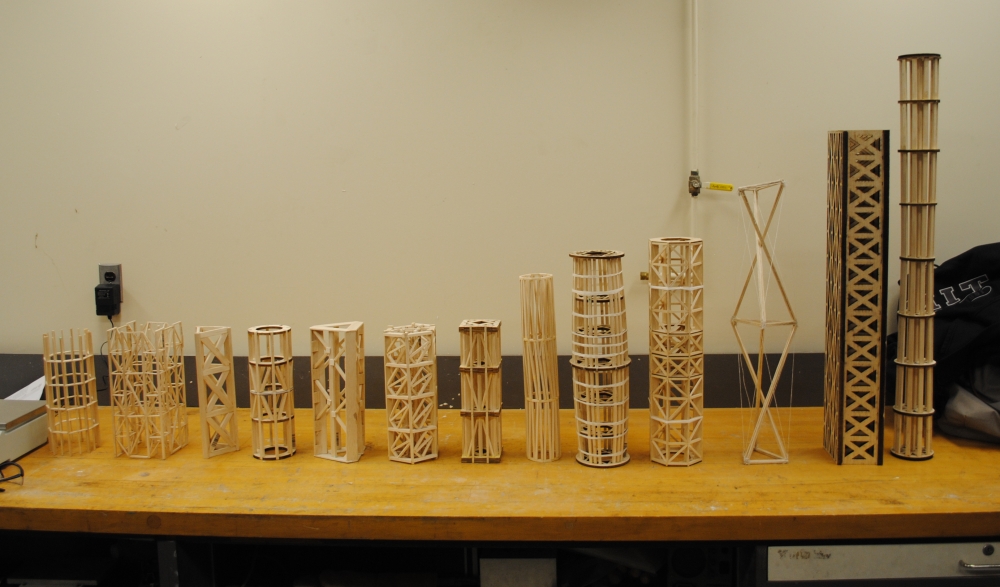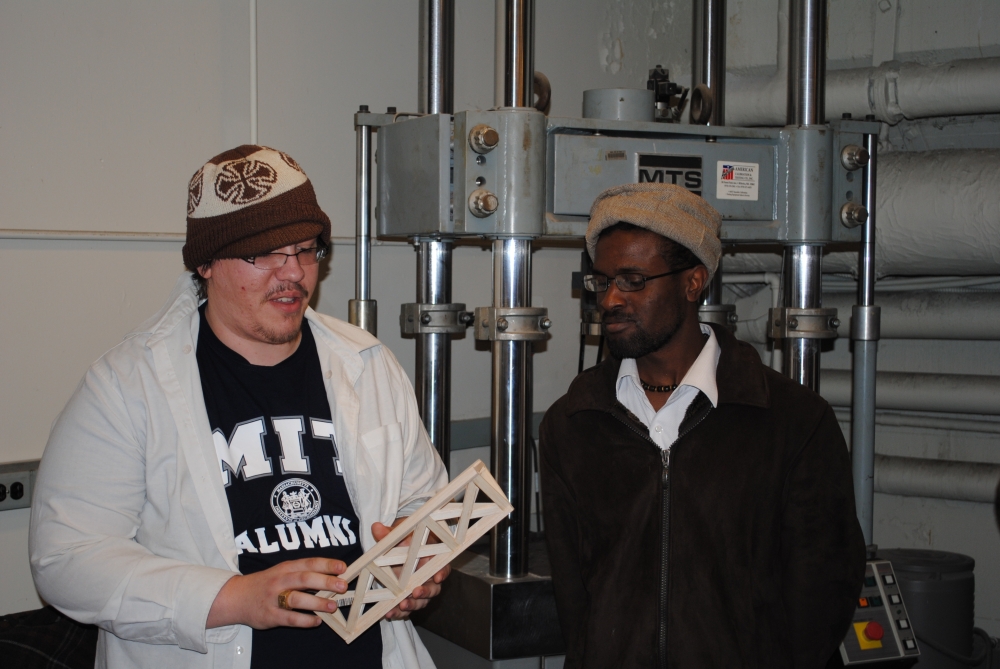Final Forty-Five by Elijah T. '11
Still somehow worse than last term
Add Date — the last date on which you can add a class — is this Friday, so I thought it’d be an opportune time to discuss the classes I’m taking this term.
I’m taking a total of 45 credits, the fewest credits I’ve ever taken at MIT. Part of the reason for that is that one of my classes (1.013) has a four-hour lab 12-4pm on Wednesday, which blocks out a lot of other classes. For that reason, 21F.702 (Spanish II) and 14.02 (Macroeconomics), two candidates for a fifth class, were not truly feasible. But, I’m a second semester senior! I’ll enjoy the extra time this term, even though it’ll still be less leisurely than last term, when I didn’t have class until 1pm any day of the week.
1.011 – Project Evaluation (9 credits)
Required by all Course IC students (although generally taken during junior year), the aim of this course is to provide the tools engineers need to evaluate projects and determine whether they are worthwhile and feasible (from environmental, social, and financial standpoints). Over the past couple weeks, the course has been heavily focused on the financial aspects, which I am, to some extent, quite grateful for, considering I couldn’t fit 14.02 into my schedule.
1.013 – Senior Civil and Environmental Engineering Design (12 credits)
As you can imagine, this is that big class that is supposed to cap off your four-year experience in Civil and Environmental Engineering. This is considered a reunion of sorts, as all the Course I seniors, regardless of whether they focused in civil engineering or environmental engineering, or transportation, structures, or geotechnics, come back together for this one final class. There are a number of people in the class who I honestly haven’t seen since sophomore year. The class has a few small projects throughout the term, but the main outcome of the class is a report on one of three real issues – the renovation of MIT’s Sailing Pavilion, the revitalization in South Florida’s Cowbone Marsh, and the improvement of South Florida’s coastal structures. I’m working on the last project, and the a couple people from the South Florida Water Management District came up to MIT two weeks ago to tell us about the project. They even said that if we happened to be in Miami during Spring Break, they could show us the waterways by helicopter (tempting offer, I know…).
1.041 – Transportation Systems (12 credits)
Although I have had a longtime interest in transportation, this is my first transportation course ever. So far, we’ve done a lot of MATLAB modeling of networks, car following dynamics, and, now, GIS. Easily the best moment of the class was when our TA last Wednesday asked for feedback on the problem set and someone sternly remarked that if he says an assignment is “due Wednesday” (as it was), it should not be due at 1:00am. Indeed, I hadn’t started the assignment by 10pm and had to cancel my quick nap when he “reminded” us (via e-mail) that it was due in three hours. Our TA took the comment rather well, but now whenever he mentions a due date for a problem set, everyone in the class responds, “What time?” He’s never going to live that one down.
4.440 – Building Structural Systems I (12 credits)
The only course I’m taking this semester that isn’t required for Course I, I was drawn to the class by the lab component (three hours on Fridays) and the architectural angle of the course. Aside from a seminar-style Islamic architecture course last term, I haven’t taken a single architecture course during my time at MIT (and I think it’s important for civil engineers to meet their architect comrades). While some of the concepts are a bit basic for a civil engineering senior (as I was forewarned), the course has begun to teach me some nifty graphical concepts that would be useful in civil engineering, but which, for some reason, have been left out of curriculum. The professor noted that he has long thought the course should be required for civil engineering sophomores (when the engineering concepts aren’t so basic). Also, I am looking forward to our design projects, where we build structural elements and models.
On Friday, we completed our first such project. We had to building a balsa wood column 12-36 inches tall and less than five inches in diameter. Prizes were to be awarded for the column that could withstand the greatest load relative to weight and greatest load multiplied by its height squared (to encourage people to build taller).
The undergraduates, for some reason, were seriously outperformed by the graduate students. Seriously. Take a look at our creations:


And here is my pair’s structure being tested…

…and destroyed…
The undergraduates’ strongest column held 2,147 lb, but it was widely believed to be outside the regulations because it was cut from sheets of balsa wood, rather than from strips of wood. Ignoring that one, the strongest column among the fourteen undergraduate teams belonged to myself and classmate Adam ’11; our column held 1,202 lb. Somehow, though, that figure was bested by six of the twelve graduate student teams, with their strongest column holding an unbelievable 5,268 lbs! Balsa wood! We held the highest pressure-per-column-mass ratio among the undergraduates (with 24.2 lbs/g; yes, I know the units are painful), but we were – again – outdone by one of the graduate teams, whose column had a pressure-per-mass ratio of 59.1 lbs/g. Their column was also the lightest of all, coming in at a shockingly light 16 grams (the heaviest were above 250 grams).
This is amazing! We had to build bridges at my school from Balsa Wood and the best held around 50 lbs. Ha, that’s an MIT education you ya!
Oooh, FUN!
Lulz @ the TA, and good job with the balsa!
Look forward to labs like these if I get in.
Yay! Something to look forward to at MIT
4.440 sounds like such a fun/exciting/interesting class!
Why can’t my classes be this cool? :(
(By the way, that was a rhetorical question. Hehe)